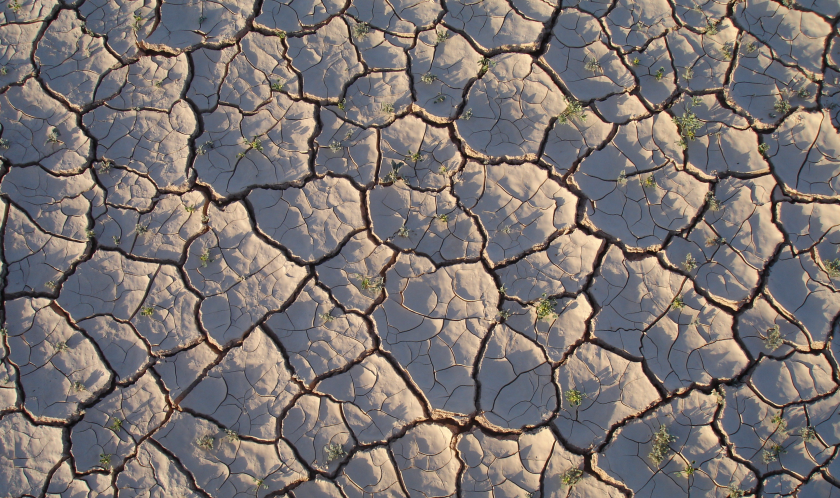
When Joshua entered the land of Canaan, did he meet the same land with the same climate that we know today?
The descendants of Joseph came to Joshua and asked, “Why have you given us only one portion of land as our homeland when the Lord has blessed us with so many people?” Joshua replied, “If there are so many of you, and if the hill country of Ephraim is not large enough for you, clear out land for yourselves in the forest where the Perizzites and Rephaites live.” (Joshua 17:14-15)
When the sons of Joseph are about to conquer their inheritance in the land of Canaan, it seems that the land is covered with forests so they cannot cultivate the land. Where are those forests today?
Then the people went out into the field against Israel, and the battle took place in the forest of Ephraim. The people of Israel were defeated there before the servants of David, and the slaughter there that day was great, 20,000 men. For the battle there was spread over the whole countryside, and the forest devoured more people that day than the sword devoured. (2 Samuel 18:6-8)
When Absalom stirred a rebellion against David, his father, they end up fighting in the forest of Ephraim. later on Absalom was caught by his hair in a big terebinth tree in that forest. Certainly a thick forest!
Then he went up from there to Bethel; and as he was going up by the way, young lads came out from the city and mocked him and said to him, “Go up, you baldhead; go up, you baldhead!” When he looked behind him and saw them, he cursed them in the name of the Lord. Then two female bears came out of the woods and tore up forty-two lads of their number. (2 Kings 2:23-24)
In the story above, Elisha went from the Jordan valley up to the mountains of Bethel. What interests us in this story is the fact that there were bears living in the woods at that area. Today this area is semi-arid.
The land of Israel in the time of the Bible and today
The three stories above, and many others, leads the reader of the Bible to think that the land of Israel is covered with thick forest where numerous beasts live.
When the American author Mark Twain visited the holy land 150 years ago, he was therefore quite surprised to see just the opposite:
“….. A desolate country whose soil is rich enough, but is given over wholly to weeds… a silent mournful expanse…. a desolation…. we never saw a human being on the whole route…. hardly a tree or shrub anywhere. Even the olive tree and the cactus, those fast friends of a worthless soil, had almost deserted the country.”
(The Innocents Abroad, or The New Pilgrim’s Progress, Mark Twain 1867)
How can we explain the difference between what Mark Twain describes and what the Bible tells about the nature of the land?
The Human intervention theory
In the turn of the 20th century, the Ottomans that were the rulers of the whole middle east, started a project of building the Hejaz Railway – a railway for a train that would go from Damascus to Medina. One branch line from this railway went all the way to Haifa on the Mediterranean Sea.
When using a steam locomotive for a train, one needs a lot of wood for burning and generating the steam. It is evident that the Ottomans cut a lot of the woods in the country for the train to operate.
The theory of human intervention claims that because of the railway and also because of overgrazing of the goats of local shepherds, the woods declined dramatically in the end of the 19 century.
As much as the decline of forest in the end of the 19 century is evident, it cannot explain what Mark Twain told us about the land in the middle of the 19 century.
First, when he visited the land in 1867, the Hejaz railway was only a plan. But moreover, the population of the land was scarce. As Twain himself describes: “a desolation…. we never saw a human being on the whole route”. so ‘overgrazing’ does not sound like the real story here.
The Global Climate Change theory
According to this theory, the climate in the time of the bible was different than it is today, and the land of Israel got much more rain compared to our days at that time of Joshua and the kingdoms of Judea and Israel.
There are climatologists that try to show climate changes according to geological evidence. For example: this site.
Do we have any evidence showing that there was more rain in israel in ancient times?
Evidence from the Negev (desert of southern Israel)
In the arid mountains of the Negev, we can find very old terebinth trees of the species: Mt. Atlas mastic tree (Pistacia atlantica)

What is interesting about this kind of tree is that it is very common throughout other areas of Israel that are not a desert. But in the mountains of the Negev, this is the only tree that can be found, and most of the individual trees are very old and are estimated to be hundred years old.
This fact led the scholars of botany to believe that those trees were abundant in the Negev a few hundred years ago, or even thousands of years, and the Negev was not so arid as it is today. during the last hundreds of years the Negev became what it is today, and only very old trees remained as living fossils.
Summary
Regardless of what you think about global warming and climate changes, it is quite clear that the land of Israel had more woods and probably more rain in the time of the Bible. The Negev in the time of the Bible was probably wetter and Israel had real natural forests which are rare today.





